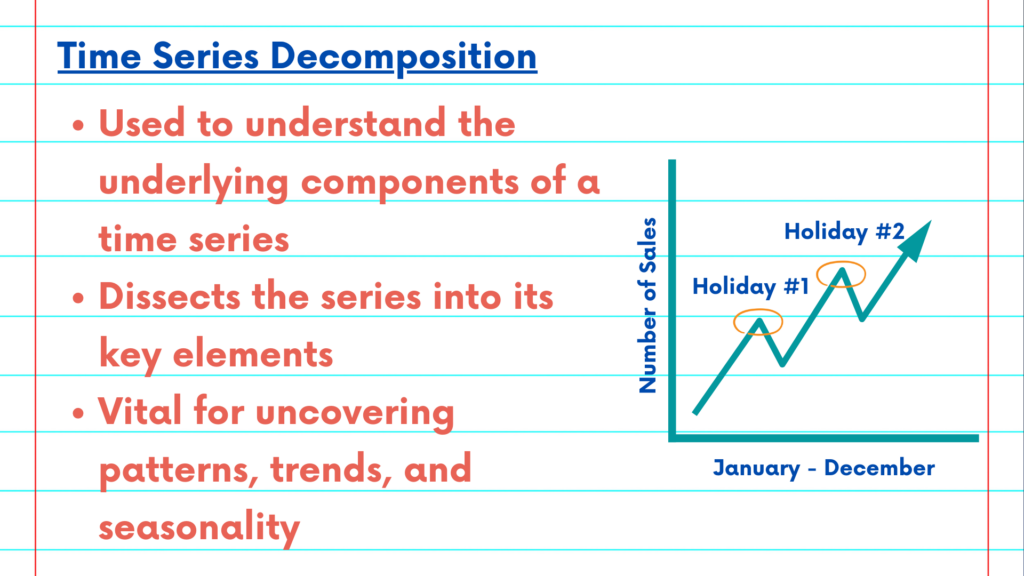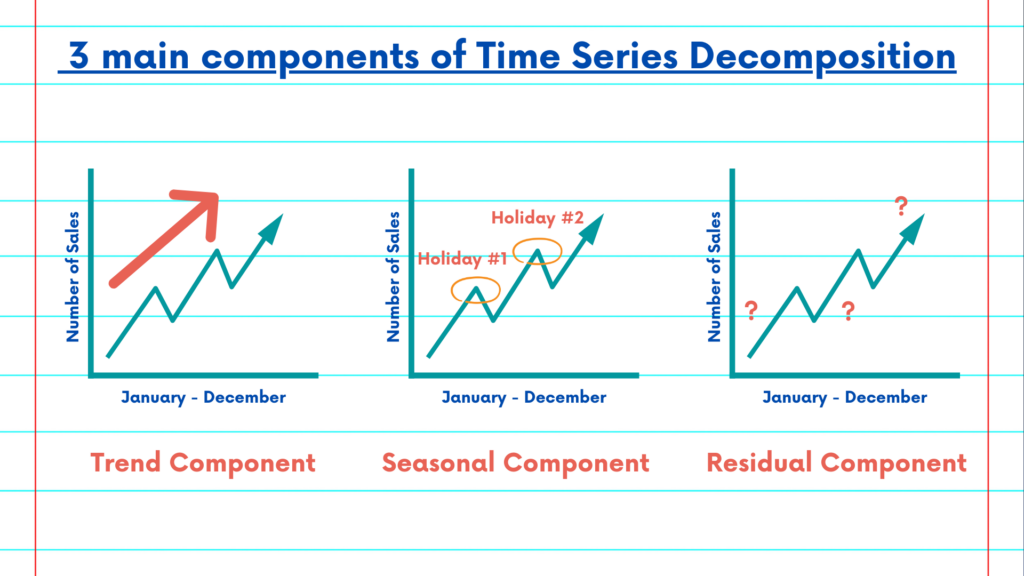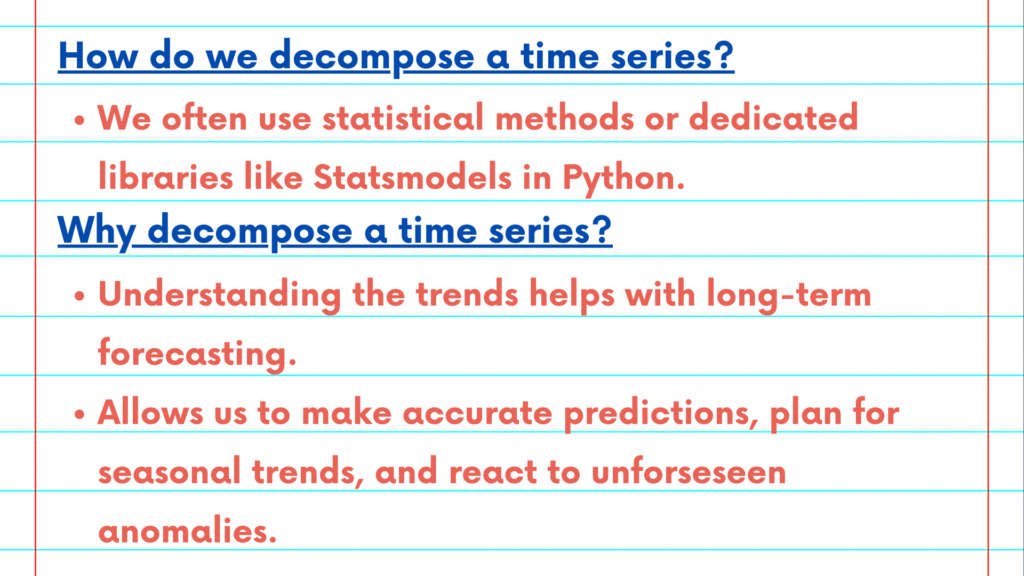This NSDC Data Science Flashcards series will teach you about time series analysis, including data preprocessing, decomposition, plots, and forecasting. This installment of the NSDC Data Science Flashcards series was created by Varalika Mahajan. Recordings were done by Aditya Raj. You can find these videos on the NEBDHub Youtube channel.
Today, we’re delving into a powerful technique in Time Series Analysis – Decomposition.
Time Series Decomposition is a method used to understand the underlying components of a time series, helping us dissect the series into its key elements. This technique is vital for uncovering patterns, trends, and seasonality.
Imagine you’re working with monthly sales data. You notice that there is a general upward trend, but also periodic spikes during the holiday season. Time Series Decomposition allows you to extract these patterns.

The decomposition of a time series typically consists of three main components:
1. Trend Component
The trend component captures the long-term direction or movement in the data. It represents the underlying growth or decline. For instance, in our sales data, the trend component shows the overall increase in sales over time.
2. Seasonal Component
The seasonal component accounts for regular, repeating patterns in the data. In the case of our sales data, this component highlights the predictable sales spikes during the holiday season. Understanding seasonality helps in planning and marketing.
3. Residual Component
The residual component represents the unexplained or random variations in the time series. It’s what’s left after accounting for the trend and seasonality. By analyzing the residual component, we can identify irregular events or anomalies that might affect our data.

To decompose a time series, we often use statistical methods or dedicated libraries like Statsmodels in Python. This allows us to break down the time series into these three components, providing us with a more comprehensive understanding of our data.
Why is this important? Well, understanding the trend helps with long-term forecasting. Recognizing seasonality enables us to prepare for periodic variations. And, analyzing the residual component can uncover unexpected events that need attention.

To conclude, Time Series Decomposition is a valuable technique in Time Series Analysis. It empowers us to make more accurate predictions, plan for seasonal trends, and react to unforeseen anomalies.
Please follow along with the rest of the NSDC Data Science Flashcard series to learn more about time series analysis.
